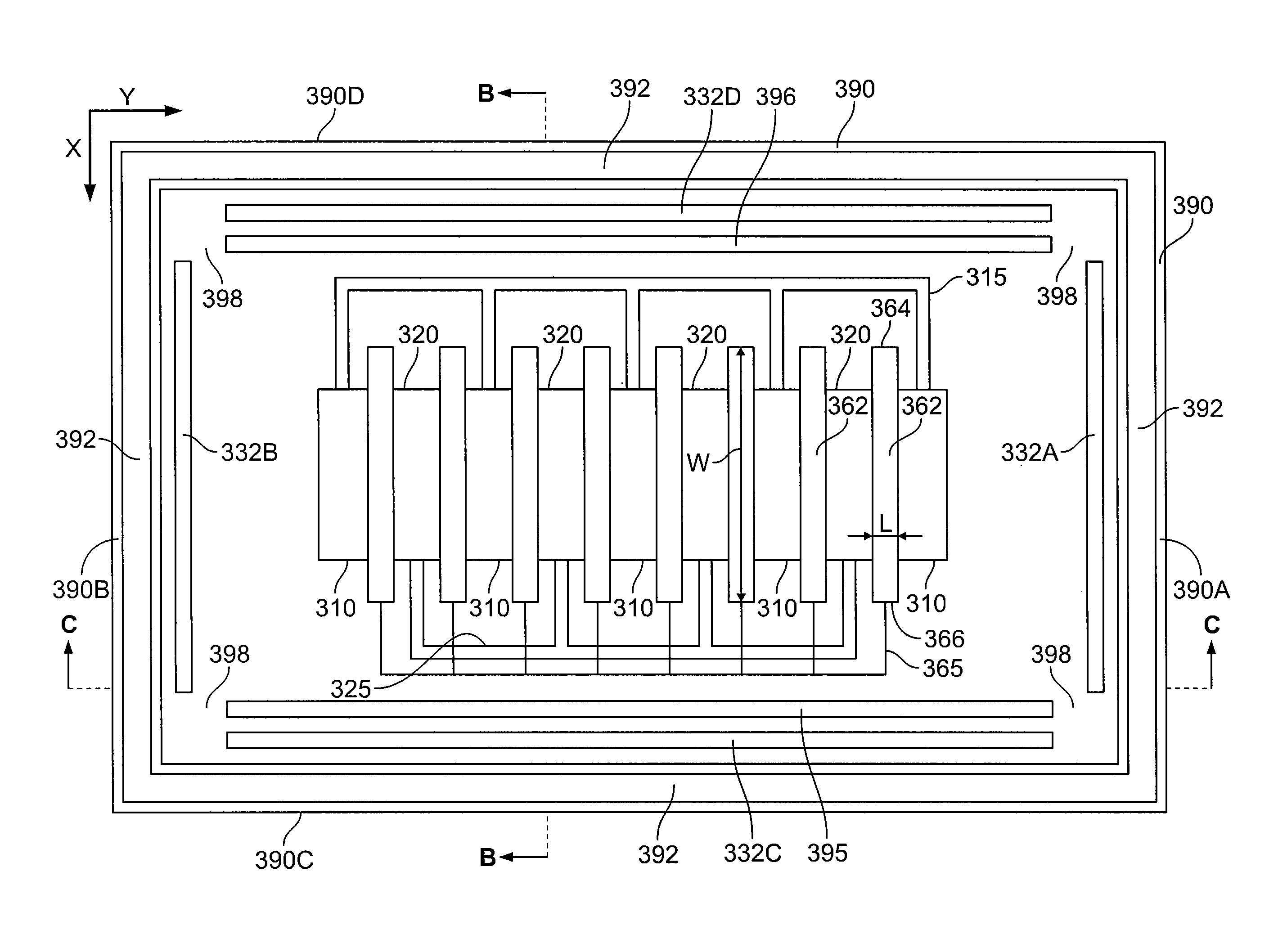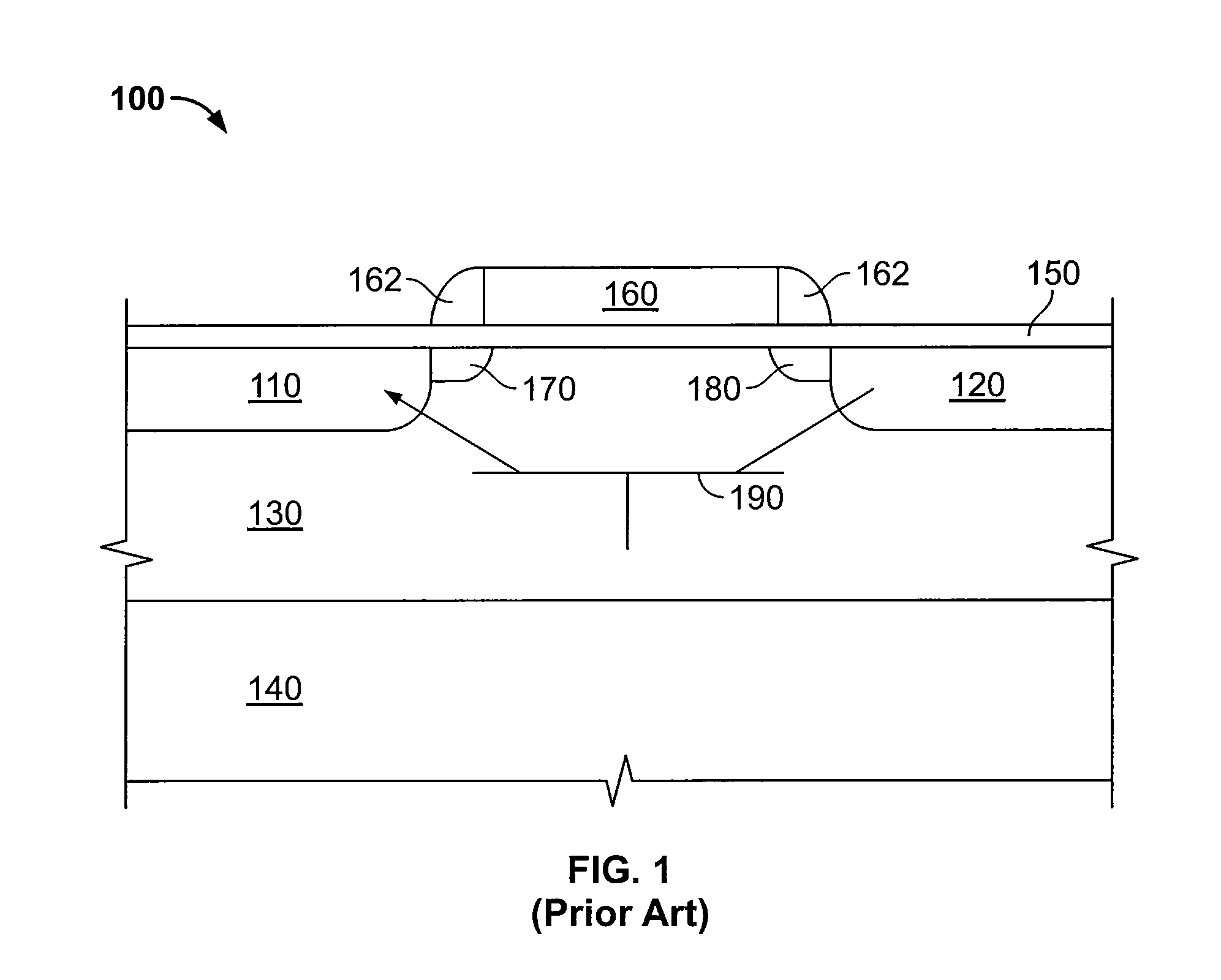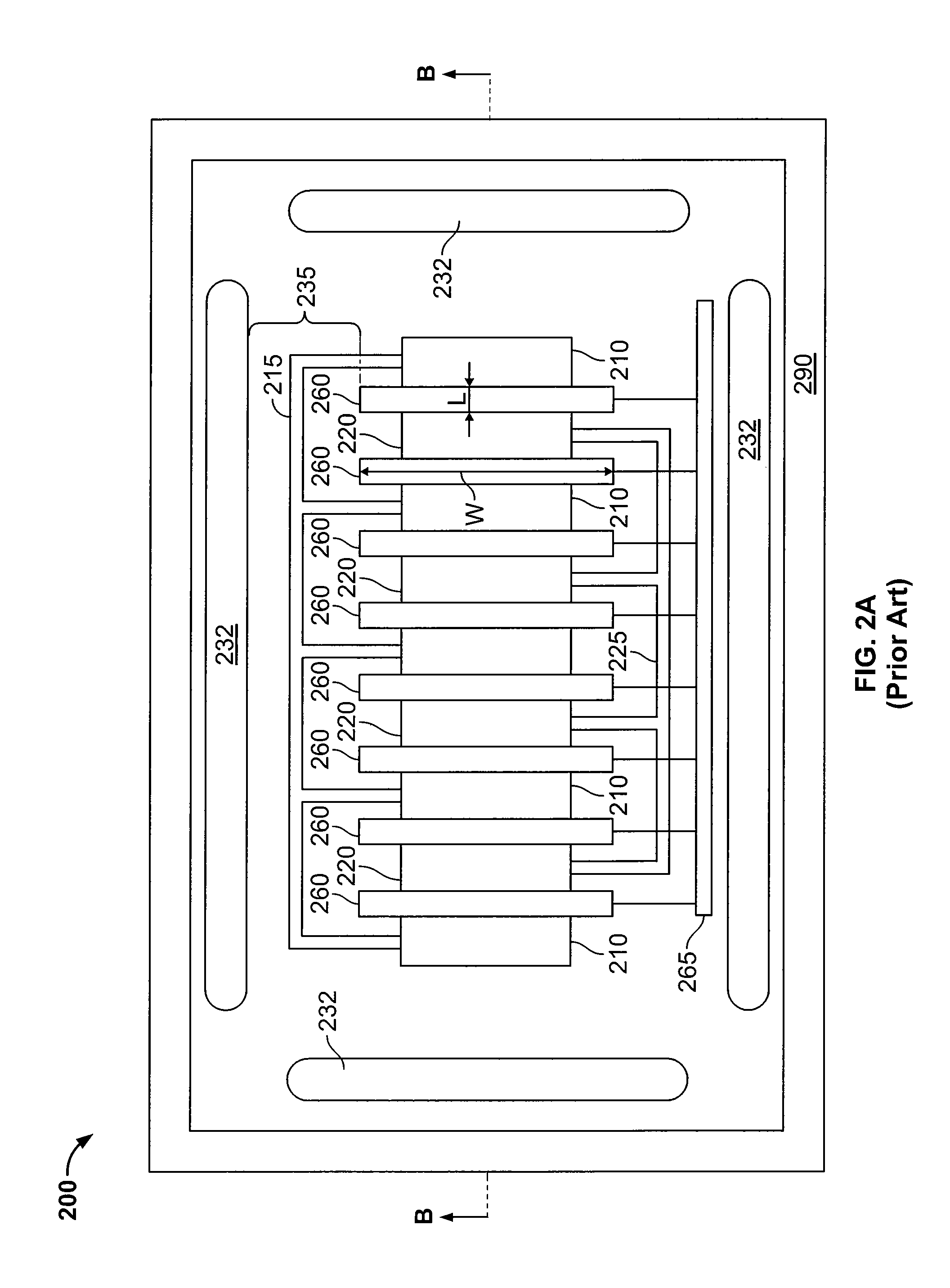ESD protection circuit
a protection circuit and electrostatic discharge technology, applied in semiconductor devices, semiconductor/solid-state device details, electrical apparatus, etc., can solve the problems of increasing the size of the transistor, the transistor cannot discharge as large an esd pulse, and the inability to trigger the parasitic transistor, so as to improve the uniformity of turn-on, improve the performance of the esd protection structure, and reduce the size of the protection structure.
- Summary
- Abstract
- Description
- Claims
- Application Information
AI Technical Summary
Benefits of technology
Problems solved by technology
Method used
Image
Examples
Embodiment Construction
[0016]In accordance with one aspect of the invention, we have modified the structure of a multi-fingered MOS transistor so as to insert a floating well between the substrate tap and the gate fingers. FIGS. 3A, 3B and 3C depict a top view and two cross-sectional views of a multi-fingered gate structure 300 formed in accordance with this aspect of the invention. The cross-section of FIG. 3B is taken along the right-hand side of line B-B of FIG. 3A; and the cross-section of FIG. 3C is taken along the right-hand side of line C-C of FIG. 3A Structure 300 comprises N-type source and drain regions 310, 320 in a first P-type substrate 330 above a deep N-type well 340, an insulating layer (not shown) on the substrate and a multi-fingered gate 360 on the insulating layer. As shown in FIG. 3A, gate fingers 362 are parallel to one another, extend in a first direction X, and have first and second ends 364, 366. LDD regions (not shown) extend part way under each gate finger. As shown schematicall...
PUM
 Login to View More
Login to View More Abstract
Description
Claims
Application Information
 Login to View More
Login to View More - R&D
- Intellectual Property
- Life Sciences
- Materials
- Tech Scout
- Unparalleled Data Quality
- Higher Quality Content
- 60% Fewer Hallucinations
Browse by: Latest US Patents, China's latest patents, Technical Efficacy Thesaurus, Application Domain, Technology Topic, Popular Technical Reports.
© 2025 PatSnap. All rights reserved.Legal|Privacy policy|Modern Slavery Act Transparency Statement|Sitemap|About US| Contact US: help@patsnap.com



